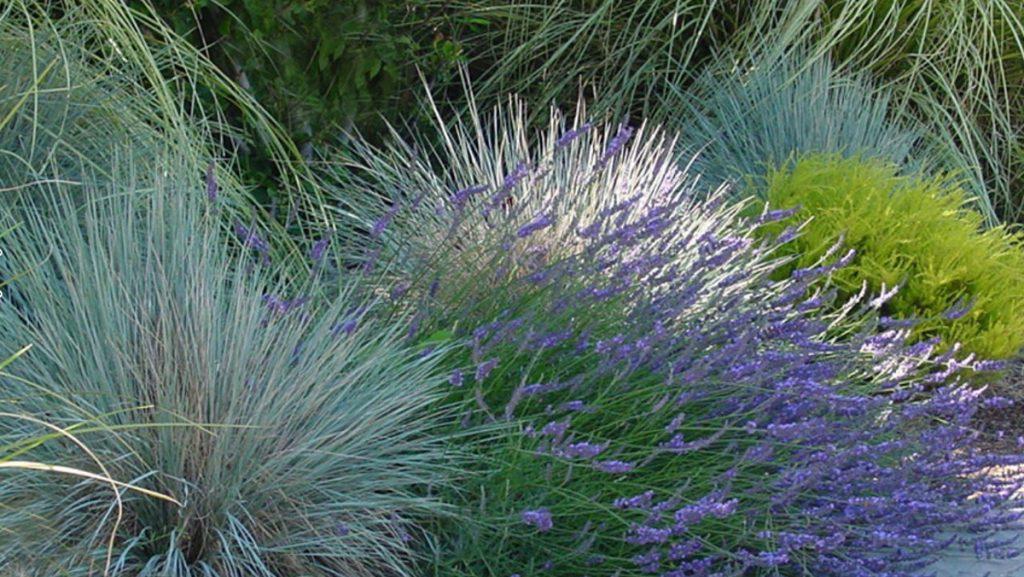The American Southwest is a huge and diverse region. Here, flowering shrubs play an important role in creating a habitat that pollinators love and to which they flock. Incorporate different canopy layers in the landscape and plant shrubs with various seasons of bloom. Then, you will attract different pollinator species and provide pollen and nectar throughout the seasons. It can be as simple as planting a small grouping in your landscape. These are just a few of the many choices for shrubs that draw pollinators. Consult with your local garden center for even more options.
Many shrubs span a wide variety of zones. You might want to read our suggestions for other regions to increase your choices: Northeast, Southeast, South, Midwest, Northwest.
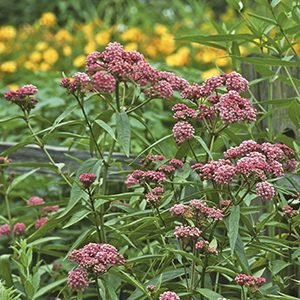
Cinderella Milkweed
N. American native with glowing-red, vanilla-scented flower clusters mid-to-late summer. Herbaceous perennial. Zone: 4 – 10
Attracts: Butterflies, especially the Monarch butterfly.
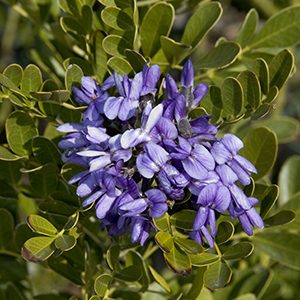
Texas Mountain Laurel
Fragrant violet-blue flowers in terminal clusters create a wonderful display in spring against the backdrop of shiny dark green foliage. Zone: 8 – 11
Attracts: Bees, butterflies including Theona Checkerspot, moths.
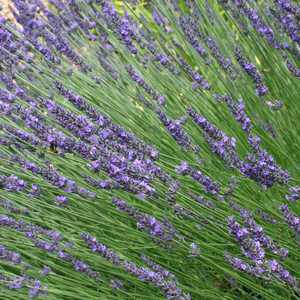
Hidcote Blue English Lavender
No warm zone garden should be without the deep purple flower spikes above mounds of gray-green foliage of this lavender. Zone: 5 – 9
Attracts: Bumblebee, European honeybee, carpenter, leaf cutter, mason and digger bees.
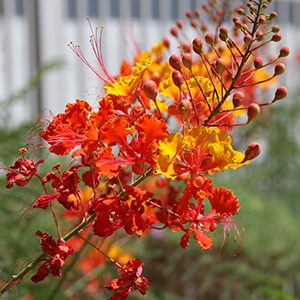
Peacock Flower
Puts on a show of vibrant orange and red blooms from summer to fall. Fern-like foliage emerges from spiny stems and branches. Zone: 8 – 11
Attracts: Butterflies (Pipevine and other large Swallowtails(, hummingbirds, moths, bees.
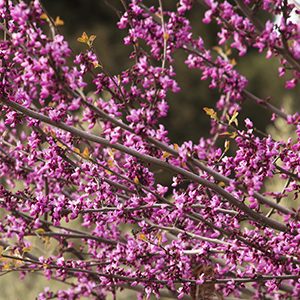
Western Redbud
Large shrub or small tree with four seasons of good looks. These start out with masses of brilliant rose-purple blossoms in early spring. Zone: 6 – 9
Attracts: Carpenter, leafcutter, mason and other solitary, small bees.

Victoria California Lilac
Cobalt-blue buds in late spring cover the dense, dark green foliage with deep-blue flowers. Tall and vigorous, coastal must-have. Zone: 8 – 10
Attracts: Bumble, honey and native bees, hoverflies, butterflies.
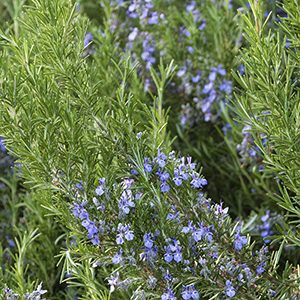
Tuscan Blue Rosemary
Quickly forms an upright hedge of aromatic, needle-like evergreen foliage. Profuse clear blue flowers add a charming effect. Zone: 8 – 11
Attracts: Bees, butterflies, Hawk moths, hummingbirds.
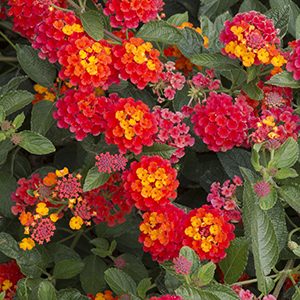
Radiation Bush Lantana
Radiant warm season color from orange-red blooms that thrive in the heat of summer when many flowers cease blooming. Zone: 9 – 11
Attracts: Bees, butterflies.
Tips for Luring Pollinators
-
Determine which pollinator-friendly plants are appropriate for your region.
-
Limit your use of chemicals (both synthetic and organic) and use plenty of compost and mulch to build healthy soil. Healthy soils create healthy plants.
-
Plan your garden so that there is something blooming for as many months as you can manage. (Try incorporating different color, fragrance, and season of bloom). Many pollinators, especially bees, forage during the entire growing season.
-
Provide shelter by letting your yard get a little wild. Allow a hedge to grow untrimmed, leave a section of lawn unmowed and pile grass cutting in a sunny spot. Then, create a nesting habitat by leaving some soil bare for ground nesting bees.
-
Group plantings so that pollinators can move safely through the landscape protected from predators.
-
A clean, reliable source of water is essential to pollinators.
-
Plant a diversity of plants to support a variety of pollinators.
Lead Image: digyourgarden.com
